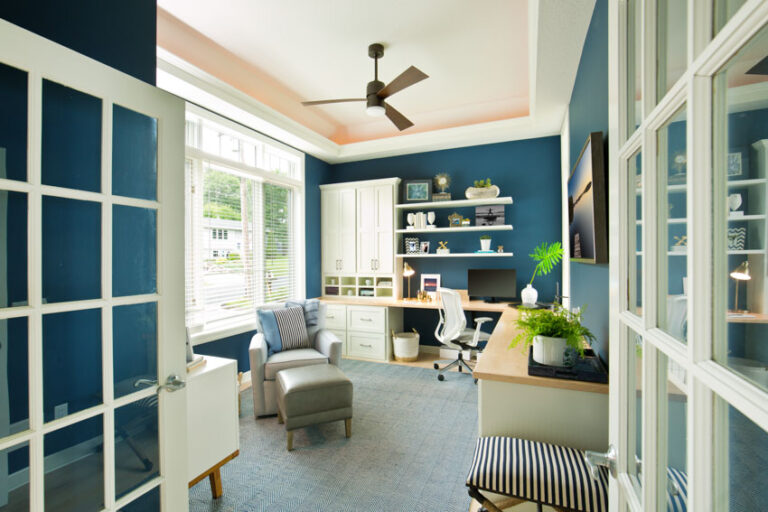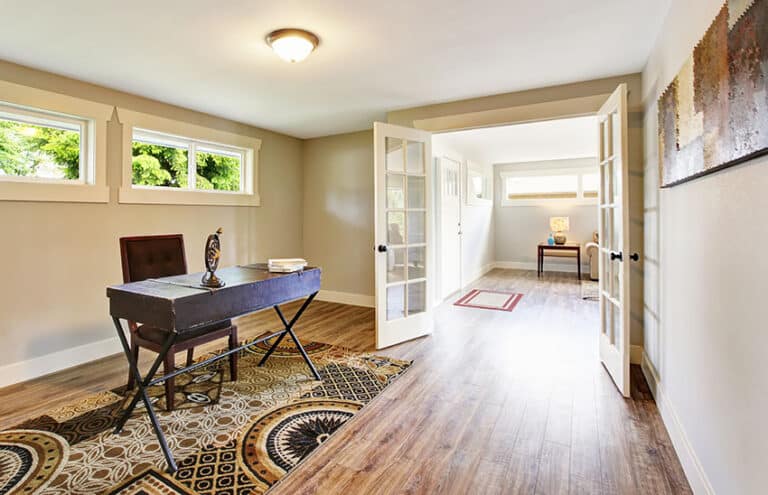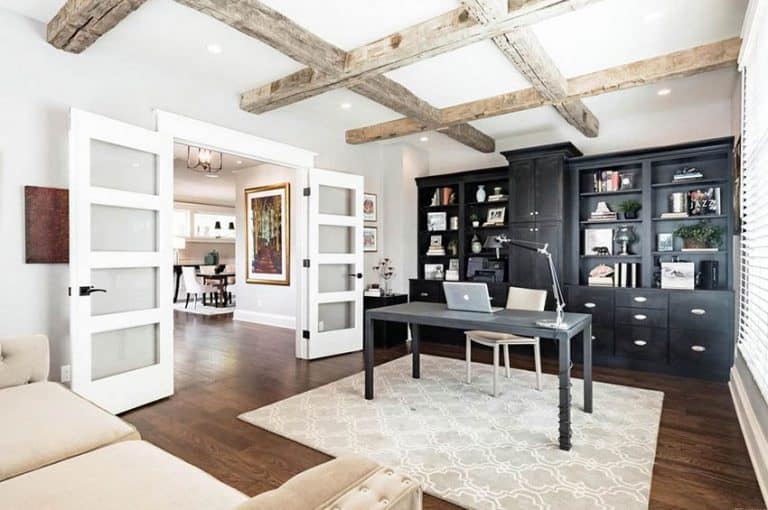Setting Up a Home Office for Remote Work
Below we share our tips for setting up a home office for remote work including helpful equipment to get the most productivity from your work space.
 A home office might stir up visions of plopping down on the couch in sweatpants and typing at your laptop. While it’s a cozy idea, this scenario may not work. Setting up a proper home office for remote work is essential for successful work-at-home productivity. When you need to set up a home office space, take the time to choose the right location in your home and the proper supplies and equipment to make it work.
A home office might stir up visions of plopping down on the couch in sweatpants and typing at your laptop. While it’s a cozy idea, this scenario may not work. Setting up a proper home office for remote work is essential for successful work-at-home productivity. When you need to set up a home office space, take the time to choose the right location in your home and the proper supplies and equipment to make it work.
If you’re not sure where to start, read this informative guide to learn tips and strategies for setting up a home office, so you can be productive and successful. [toc]
Setting Up a Home Office for Remote Work
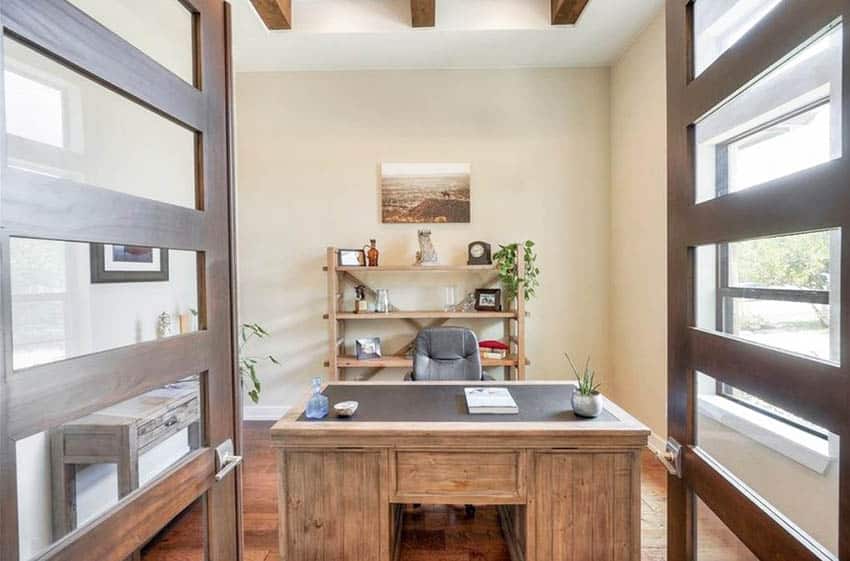
If space is an issue, a Murphy bed works to free-up floor space. If the only option is an alcove in your home, be sure it’s out of the path of family traffic and can be partitioned off for privacy. You can also utilize a home office with built-ins to maximize space.
A sunroom in temperate climates or screened-in patio can be converted to an office area and if necessary, you can commandeer the kitchen breakfast nook as an office. Once you have a space set aside, use the following tips to set up and start working remotely.
Wires, Electrical Outlets, Internet Hookup & Emergency Backups
Check for electrical outlets and consider how many plugs you’ll need. The safest option is to purchase a power strip with multiple plugs, USB connections, and power surge protection. If you work remotely and only need to access the internet for research, file sharing, or other tasks not burdened with large amounts of data, your home wireless router should be sufficient.
If your work includes multiple teleconferencing calls or company VPN hookups, being able to plug your laptop or computer directly into the internet source would be the best solution. Check with your internet provider for business connection solutions to allow larger data transfer when streaming. An upgraded wireless router can do the job too.
One thing many people setting up a home office don’t consider is taking precautions for a power outage. Powering a sole laptop is typically be fine, but a desktop will lose power during an outage. An emergency backup system can power your system in the event of a power outage for a prolonged period of time.
Another consideration for a desktop computer with peripherals and a printer is that it could be too much of a load on the power for that section of your home. Test the power drain before you set up your office by turning on electric appliances or lights and your computer.
Lighting During Daytime and Nighttime

A window facing your monitor may cause too much glare and make it difficult to see your screen. Be attentive to where you set up your workstation taking notice of any direct light.
Distractions and Interruptions
There’s nothing worse than being on a phone call in a room full of people. The same goes for a home office. Teleconferences or business phone calls require quiet and concentration. Meetings online with video apps such as Zoom or Skype require privacy as you’ll be sharing your screen for video calls. If you have a dedicated office space with a door, distractions can easily be avoided.
If you don’t have an enclosed area to work, minimize distractions by implementing cubicle wall panels or even a sheet hanging from a curtain rod attached to the ceiling with hooks. This creates a soft boundary for your office and indicates you’re in work-mode and need uninterrupted work-time. Read more about how to soundproof a home office here.
 Ergonomics
Ergonomics
The word ergonomics became popular years ago when office workers found themselves with strained backs and carpal tunnel syndrome, a painful wrist condition sometimes requiring surgery to correct. Your home office needs to be comfortable but also healthy for you.
Be sure to have a proper chair that supports the curves of your spine and allows you to place your feet flat on the floor. If your legs are too short, use a footstool. Your laptop or monitor should be an arm’s length away and the top of the screen close to eye level. Having the right home office flooring is essential to ensure that your freedom of movement is not reduced.
Think of items you need to reach for, such as a stapler, notepad, or pens, and keep them close enough, so you don’t have to stretch too far and over-extend a muscle or ligament. An ergonomic keyboard helps support your wrists but keep your mouse at the same height to minimize arm movement. Try to keep your wrists straight when you type or use the mouse to prevent putting pressure on nerves or veins.
Invest in a good headset with a microphone so your hands will be free and never cradle your phone between your chin and neck. Ergonomics is an essential consideration for a home office designed for you to work remotely.
Virtual Smart Assistants
If you work at home remotely, you may lose the luxury of a secretary or office manager. Using technology such as Amazon’s Alexa and Google Assistant provides you reminders for tasks and appointments with audible feedback. A calendar on your computer can provide a pop-up reminder, but the sound of a voice letting you know what’s ahead is a great way to stay on track while working from home.
These handy devices allow you to research or look up facts quickly and can take notes for you as you think of an idea, freeing up your hands to work on your keyboard. You can also use software such as Dragon speech recognition software for quick dictation and transcription.
The goal of setting up a home office for remote work is to ensure you can be as productive as you would if at the company office, with little distraction, comfortable, and ergonomically designed. For more related designs visit our gallery of small home office ideas.

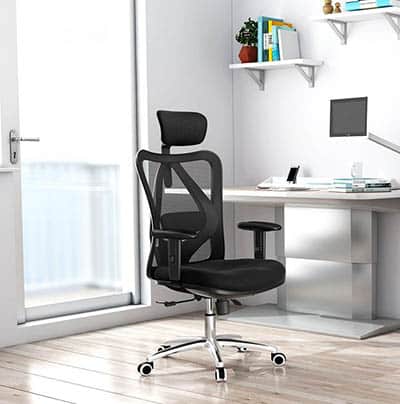 Ergonomics
Ergonomics